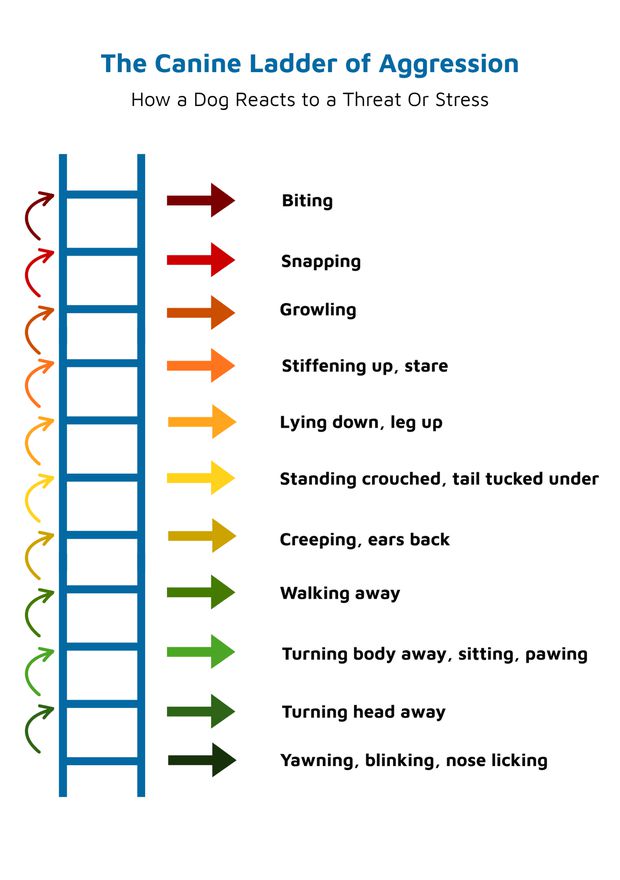Understanding Dog Body Language: How to Recognise Stress, Fear, and Happiness
Dogs communicate constantly. Not through words, but with their bodies. Whether it’s a wagging tail, a turned head, or a low growl, every gesture tells a story. Learning to read these signals helps keep both you and your dog safe and builds a stronger, more trusting bond.
The Canine Ladder of Aggression
When a dog feels threatened or stressed, they move through a series of escalating behaviours, known as the Canine Ladder of Aggression.
At first, dogs may show subtle signs of discomfort, such as yawning, looking away, or licking their nose. If the threat continues, these signals can develop into more serious warnings like growling or snapping.
Here’s how the ladder typically progresses:
Recognising early signs, like a dog turning away or yawning, gives you a chance to remove the stressor before aggression occurs.
Reading Tail Positions
A dog’s tail is one of their most expressive features. However, tail shapes vary by breed, so context is key.
- Tucked tail: Fear, anxiety, or submission
- High and rigid: Alert or feeling threatened
- Low and wagging slowly: Uncertain or cautious
- High and wagging quickly: Excited or happy
- Loose, full-body wag (“backend wiggle wag”): Relaxed and friendly
Other Signs to Watch For
Fearful or Anxious Dogs may show:
- Whale eyes (whites of the eyes visible)
- Lip licking or yawning
- Cowering or backing away
- Raised hackles
Content or Happy Dogs tend to:
- Have soft, blinking eyes
- Display relaxed faces
- Offer play bows
- Wag tails in wide, helicopter-like motions
How to Greet a Dog Safely
Many dog bites happen because people misread a dog’s body language or approach too quickly. Follow these tips for safer, stress-free greetings:
- Ask permission before interacting with someone else’s dog.
- Observe first if the dog is relaxed and approaches you, it’s okay to interact.
- Approach slowly and sideways, not head-on.
- Avoid direct eye contact or leaning over the dog.
- Let the dog approach you, don’t extend your hand.
- Keep petting gentle - most dogs don’t enjoy hugging or rough handling.
- If the dog looks nervous, give them space and admire from afar.
By using calm movements and respecting personal space, you make every greeting a positive experience.
The Bottom Line
Understanding dog body language isn’t just for trainers, it’s an essential skill for all dog owners and anyone who spends time around dogs. By learning to spot early signs of stress or discomfort, you can prevent negative encounters and help your dog feel secure and understood.
You can find more animal advice on our website here.

